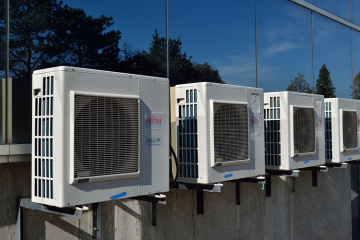What are the 3 must to have qualities in the Care management system?


Care control is your variety of actions meant to enhance patient care and decrease the demand for health care services by assisting caregivers and patients more efficiently manage health ailments. Many health care organizations are only entering risk-based contracts, in which they’ll be held liable for providing care to particular inhabitants of patients whilst practicing excellent care direction.
Other businesses have extensive experience providing care management, but they utilize home-grown or commercial resources that may not scale with expansion. And other associations, working from the fee-for-service (FFS) surroundings, hardly break even in their current care management attempts and they need better performance.
Must check– pet care software
What is required is the analytics-driven care management system which addresses these problems by streamlining workflows, prioritizing daily activities for maintenance staff members in a mathematical manner, and steering action to the locations which will positively affect the most individual lives at the most effective manner.
The DNA-Driven, All-Inclusive System Approach to Care Management
A maintenance management system has to be assessed in three areas: comprehensiveness, inclusivity, and analytics focus.
A Care Management Tool Must Make a Comprehensive System
To begin with, a maintenance management system has to be precisely that: a method. Electronic medical records (EMR) or care coordination alone cannot satisfy the requirements of healthcare associations under healthcare.
A legitimate system provides a package of products which incorporate information from many resources, stratify patient threat, arrange patient intake, handle patients through comprehensive maintenance coordination, current two-way communication between patients and care managers, and quantify care group operation.
The technology to support care management starts with the EMR, however, extends much beyond the mere digitization of an individual’s health history. While EMRs are essential sources for collecting and collecting information, they’re not the interactive workflow application which clinicians need for timely and timely decision making.
What is required is a package of tools with attributes in all five core characteristics of maintenance management:
Data integration: The capacity to extract information from several EMRs and other information resources, subsequently aggregate, analyze, and make it accessible to the proper people at the ideal moment.
Patient stratification and ingestion: Utilizing analytics-driven decision making to recognize insecure, high-utilization patients. This instrument also provides care managers with prioritized worklists for interventions, and simplifies their job.
Care coordination: The timely, comprehensive care staff communication and cooperation on individual evaluations, care planning, and interventions.
Patient participation: Informing patients about their care planning and facilitating interaction among healthcare staff members via application-based protected messaging, assessments, care planning and related activities, and instruction.
Performance measurement: Advanced reporting capabilities to demonstrate how the maintenance team performed after assessing and acting on the information supplied.
These are the resources which include a comprehensive care management platform, however, two other regions more significantly specify its value and efficacy.
A Care Management System Must Be All-Inclusive
A maintenance management system shouldn’t be jumped by one EMR and should span an assortment of different information resources. This allows communication across the whole care staff, which may include patients, acute care, primary care, specialty care, therapists, social workers, and maintenance managers.
Whenever there are several health programs and companies working together in a health program, the wide range of information resources and maintenance team members develops even more complicated. Thus, a maintenance management system has to sit at a level higher than a single EMR. It has to pull data from each system and function as a stage where communication occurs.
A Care Management System Must Have Analytics in Its Core
The maintenance management system ought to have analytics in its own DNA, so the system’s programmers must also have analytics within their DNA. The machine has to have the ability to examine data to find out patterns and tendencies that drive better results for patients and alter the daily workflow for clinicians.
Embedding analytics, machine learning, and data excellent improvement abilities within the resources is natural if these specialties are deeply ingrained within their software development.
The DNA of all EMRs, on the other hand, is in digitizing newspaper procedures. They’re electronic filing cabinets with difficulty lists in 1 document and communications in a different. To an extent, they automate manual clinical procedures, however when it comes to indicating new workflows, stratifying and identifying patients at risk for specific conditions, and allowing better decision making based on analytics, EMRs are not the best option.











